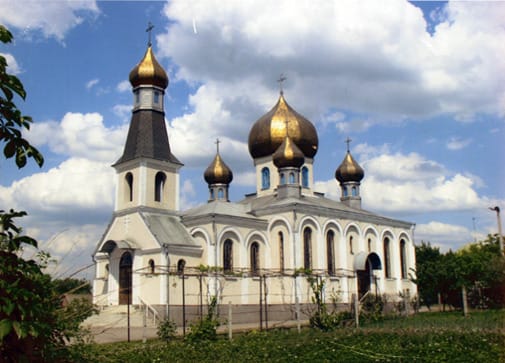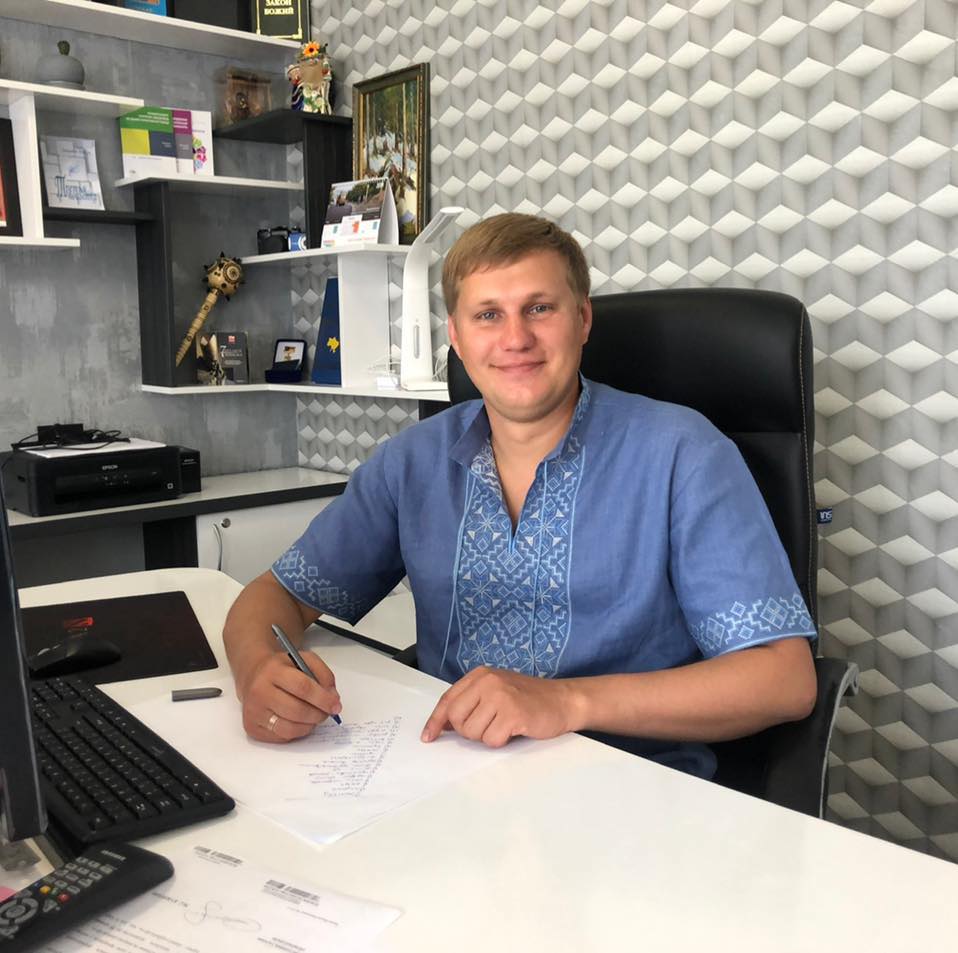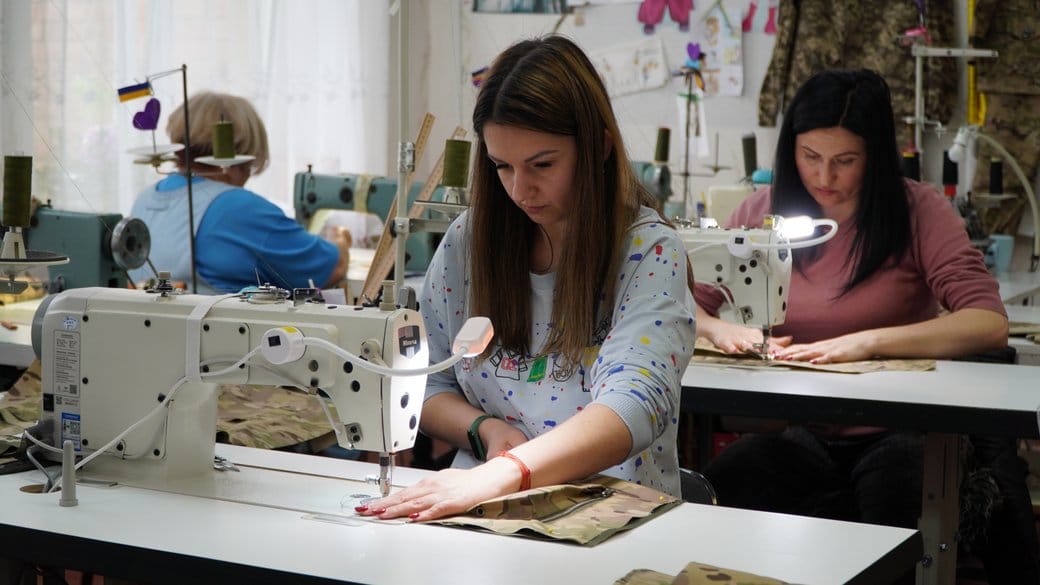This website uses cookies so that we can provide you with the best user experience possible. Cookie information is stored in your browser and performs functions such as recognising you when you return to our website and helping our team to understand which sections of the website you find most interesting and useful.
Tomakivka Territorial Community

The Tomakivka Settlement Territorial Community is located in the territory of the Nikopol District of the Dnipropetrovsk Region.
The total area of the territory: 67,054.10 hectares
Population: 14,359 residents
Men: 6,522 residents
Women: 7,837 residents
Children: 2,410 residents
Pensioners: 3,771 residents
Internally displaced persons: about 4,700 people
The Community includes 35 settlements with its administrative centre located in the urban-type village of Tomakivka.
History
The first settlers of Tomakivka were Cossacks. The pride of the Tomakivka Community is the Tomakivska Sich, which was founded in the first half of the 16th century.
In 1552, the village of Tomakivka was founded.
There are more than 280 burial mounds in the territory of the Tomakivka Community. In the 19th and 20th centuries, some mounds were explored by archaeologists; burials, clay bronze vessels, weapons, tools, silver and gold ornaments were found.




In 2020, the central park was reconstructed in Tomakivka as part of the Territory of Comfort regional project.

Economy and Welfare
Agriculture is the largest branch of the Community’s economy (90%), represented by 85 agricultural companies and farms.
The industry of the Community is represented by a butter factory and a cast container factory. SEM ECOPACK is the only manufacturer in Ukraine that produces a real ecological alternative to almost all the plastic packaging.

The sphere of public service is widely developed and is represented by sixty-eight shops, four gas stations, seventeen hairdressers, six sewing workshops, and three car washes.
The Community runs one hospital, one primary health care centre, which includes five general practice outpatient family medicine clinics, one medical centre, two paramedic centres, three health centres and one permanent ambulance station.
In 2023, a general practice outpatient family medicine clinic was opened in the village of Tomakivka.

The Community also runs five preschool education institutions, five lyceums and one grammar school, an out-of-school education institution, an inclusive resource centre, a centre for professional development of teaching staff and an art school.


In 2020-2021, Tomakivka Lyceum No. 1 was modernized. It has become an ultra-modern, multimedia and energy-saving institution. Also, the facade of Lyceum No. 2 was insulated in order to achieve higher energy efficiency indicators.


In 2019, with the participation of GIZ project representatives, a social hostel for internally displaced persons and families in difficult conditions was opened in the centre of the Community, as well as the Social Services Centre, which provides a wide range of services to those in need. The Community provides services not only to its residents, but also to the Myrove Rural Territorial Community on the basis of inter-municipal relations.

Community and War
The Tomakivka Community is located 20 kilometres away from the zone of active hostilities and 40 kilometres away from the Zaporizhzhia nuclear power plant.
Since the first days of the war, the people of the Community have come together to work behind the front-lines. Many men from the Community have joined the ranks of the Armed Forces of Ukraine.
On the second day after the beginning of the invasion, the Humanitarian Centre was created, to which fellow villagers began to bring food, clothes, medicines, hygiene products and many other necessary things. Volunteers formed packages with necessary things every day and sent them to where they were needed.

The residents of the Community cooked food for the defenders, wove camouflage nets, made homemade candles, sewed items of equipment, were blood donors, transferred funds to foundations and volunteer organizations, made body armour, even children made patriotic postcards for the defenders.



The Tomakivka Community has become a refuge for people who were forced to leave their homes and look for new housing. Every day, the Community received internally displaced persons, provided them with housing, food and everything they needed. Today, there are about 4.7 thousand of them in the Community.
People of the Community
Ivan Kalashnyk became the head of the Community at the age of 30.

On the initiative of the Village Council head, with the joint efforts of volunteers and the Community residents, a volunteer sewing workshop “Wings of Victory” was created at the beginning of the war. Craftswomen sew military uniforms, balaclavas, unloading systems – tactical unloading, unloading vests, bags, covers, restore military jackets, military attributes, and more.


The employees of the Executive Committee have joined the Ukrainian national movement “Gardens of Victory”. A plot of land with an area of about 30 hectares was planted with potatoes and onions.


The Tomakivka Community with a population of almost 18,000 people was left without water because of the Kakhovka hydroelectric station having been blown up by russian troops. Over the course of two days, they organized water supplies, then drinking and technical water supply points, purchased water containers for the residents of apartment buildings, arranged alternative water sources, and installed purification systems.
The residents of the Community began to organize themselves: to purchase containers and dig wells. Farms, businesses and volunteers joined in to help. Domestic and international funds were also involved providing bottled water, containers, cleaning systems, food products, hygiene kits, and more.
Today, the issue of water supply in the Community is its top priority one.


Undoubtedly, a significant achievement in the Community is the opening of the modernized Administrative Services Centre of the Executive Committee of the Tomakivka Settlement Council, which became possible as a result of cooperation with U-LEAD with Europe. At present, the Centre’s employees provide 360 administrative services.
Development Strategy
The priority areas of the Community development include storage and processing of agricultural products; animal husbandry, poultry and fish farming; vegetable growing and gardening; collection and disposal of solid household waste; development of artesian wells; production of bricks, tiles, ceramics and pottery; green tourism and revival of folk crafts.
The Community participates in the project “Using solar energy for partial energy supply to communal facilities, enterprises, and organizations, night lighting, green tariff.” The project envisages several ways to reduce the consumption of natural gas and energy resources in order to protect the environment and reduce CO2 emissions:
– use of lanterns with solar cells and batteries for street lighting;
– use of solar collectors for hot water supply to the communal facilities of the Community;
– installation of a solar power plant.

In the territory of the Community, it is planned to create a rest area for motorists with a developed infrastructure (gas station, motel, cafe, roadside wholesale and retail mini market near the highway) as part of the project “Creation of a rest area for motorists”.
The project “Construction of a workshop with a waste sorting line, including through cooperation between several communities” is important. The project envisages the development of a scheme for sanitary cleaning of the Community, the reconstruction of the existing solid waste landfill, the construction of a waste sorting workshop, which will make it possible to extract valuable materials for their further processing.
On the first stage, the following will be employed separately: glass, metal, polyethylene, paper, PET bottles, and in the future – other resource-valuable materials. The main construction facilities incluide a platform for collecting and loading waste onto a conveyor, a press for sorting recyclables, and a platform for storing processed products.
The Community leadership also plans to build an asphalt plant. The project envisages the arrangement of crushing and sorting, grinding, drying, mixing, bituminous, repair and energy (electricity and water facilities) workshops and laboratories, warehouses, household and administrative premises.
